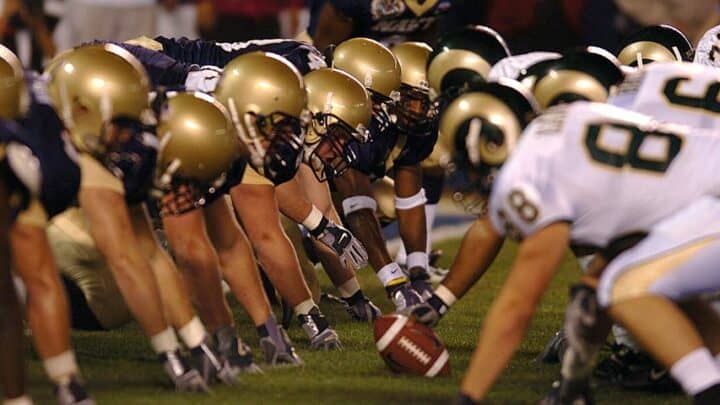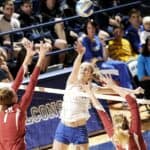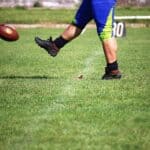In American football, the safety position is, like the name implies, the last line of defense.
Their job is to help the cornerback on long passes and to help make tackles on any ball carrier.
They may line up differently depending on the type of defense being used, or on the kind of offense they are playing against.
Table of Contents
What is the Difference Between Strong Safety and Free Safety?
The strong safety lines up on the same side of the field as the tight end plays closer to the line giving more support to the run defense. The lines up as the farthest back defensive player, and will help more with pass defense, supporting the cornerbacks as they cover receivers.
The Strong Side and the Weak Side in Football
The term strong side refers to how the offense is lined up. If the offense has a tight end, and most do, that is called the strong side because there are more players on that side of the field.
Sometimes the other side of the field is called the weak side, but that does not mean it is weak, just that it has fewer players.
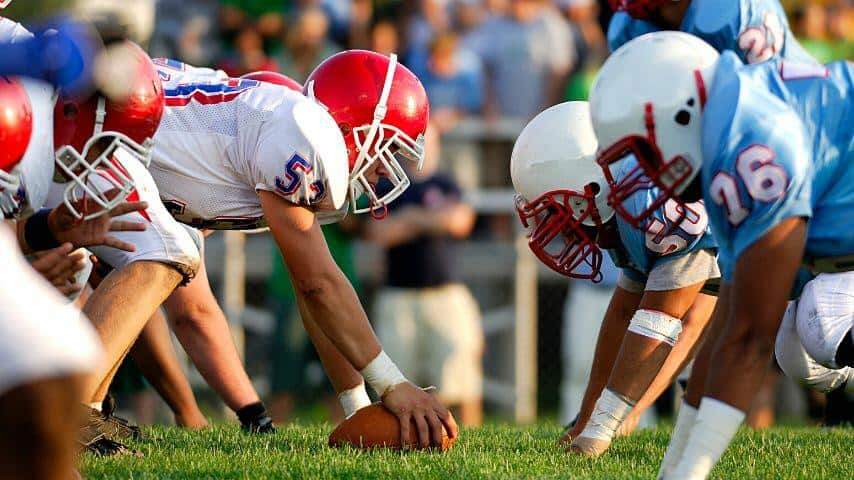
The strong side in football refers to where the offensive team lines up, and they usually have more players
The safeties line up differently depending on which side is the strong side. They will adjust if the tight end is on the other field side on the next play.
Generally, the strong safety helps out on the run defense, while the free safety goes where he is needed to help stop the offense.
These are both very important positions in defense. They have more duties than other defensive players.
They have to be more aware of what the entire offense is doing, and what each of their teammates is doing in order to do their own job.
The Strong Safety
The strong safety is a cross between the defensive back and the linebacker. Strong safeties play closer to the scrimmage line and help more with running defense.
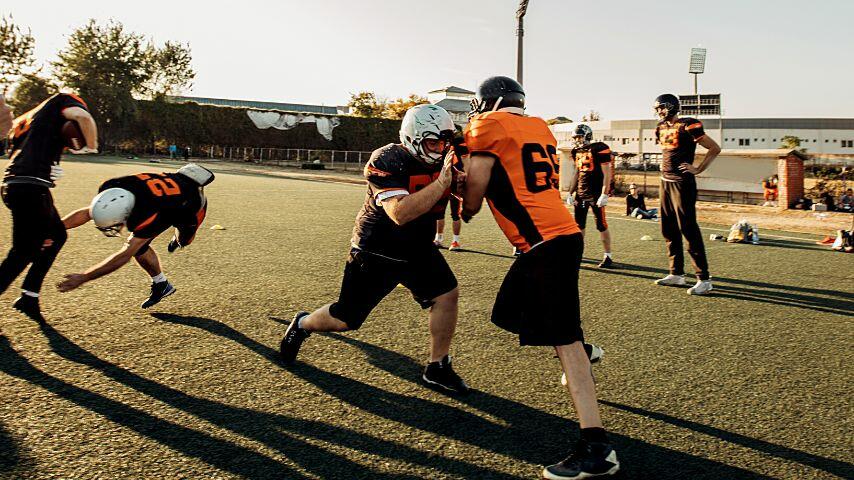
The strong safety player plays closer to the line of scrimmage and helps in running defense
Often, the defense will be configured to force the runner with the ball into the hands of the strong safety.
The strong safety may also be tasked with covering the tight end if he goes out for a pass, so there are some quick decisions a strong safety has to make as the offensive play develops.
The Free Safety
The free safety is, in a sense, free to make a play where it needs to be made. From the scrimmage line, he typically plays 10 yards or so, hence, he’s considered the last defense line.
The free safety is more involved in pass coverage than the strong safety.
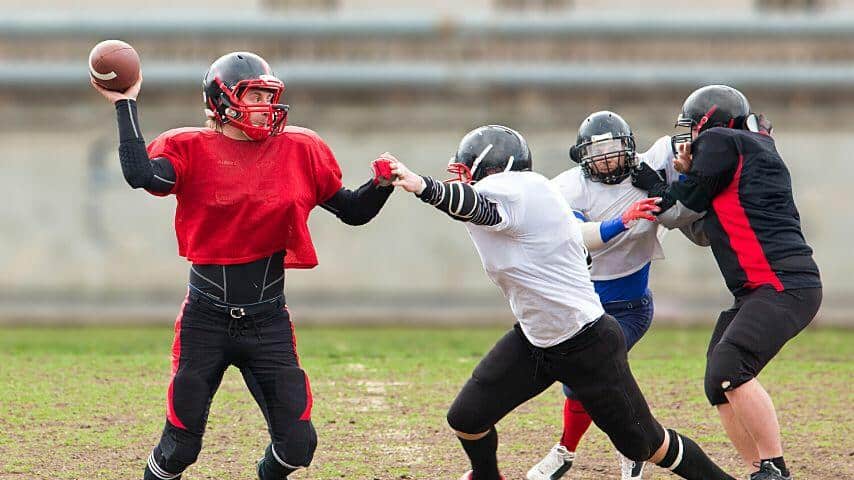
Compared to the strong safety, the free safety is more focused with pass coverage
The free safety often moves over to help the cornerback on deep passes, particularly if they are running a zone defense.
With teams that pass a lot, and use a lot of receivers, the free safety may also have to cover a receiver.
Safeties vs. Corners
Safeties and cornerbacks make up the defensive backfield. There are usually four of them, and sometimes a fifth one is added and that may be called a nickel package.
Corners play on the edge of the field and cover receivers. They generally cover them one on one, and it is a high-pressure position.
On deep passes, safeties will come over to help defend a pass, so the receiver ends up going against two defenders.
Safeties are playing in the middle part of the field. The strong safety may cover the tight end, and the free safety could cover a receiver coming across the middle of the field.
The safety’s basic job, however, is to be the last line of defense and keep ball carriers out of the endzone.
On running plays, they are hopefully there to make the tackle of the running back make it through the line and past the linebackers.
The Blitz Package
The free safety is often used in blitz packages or plays. The strong safety does this less often, and cornerbacks do it even less.
Since the free safety is in effect a free agent on a pass play, he is the logical one to try the blitz play.
On a blitz, someone who does not normally do so, like the free safety, charges the line and tries to get to the quarterback.
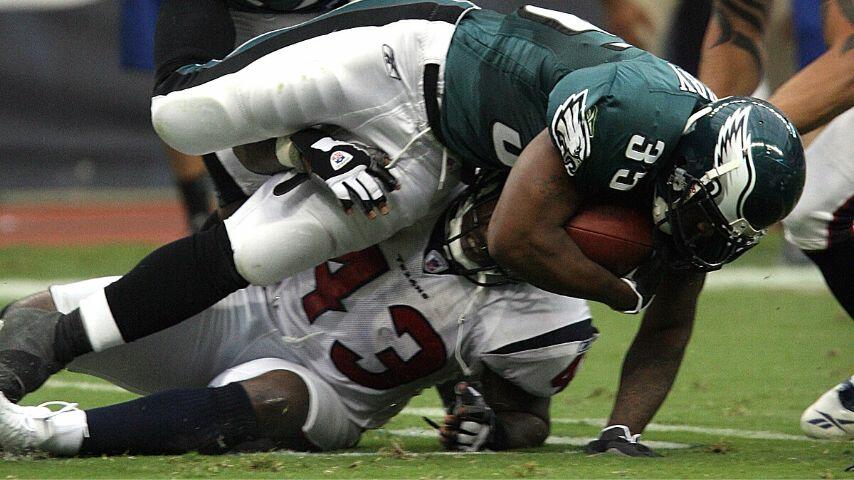
The goal of the blitz package is for someone in the team, oftentimes the free safety, to knock down the quarterback
Of course, he wants to sack the quarterback, but if he can just make the quarterback uncomfortable enough to alter his pass, that is often good enough.
The blitz is very effective, but it comes with a risk. This means there is no help for the cornerback on a deep pass, and the last line of defense will not be there.
As a result, it is crucial that the other defensive backs execute their plays effectively.
The blitz removes a key defender from pass protection, and that is where the risk comes. While it is risky, there is a lot of potential for good things to happen for the defense.
It often disrupts the offense enough to throw a playoff balance even when the safety is not able to get to the quarterback.
Different Coverages
In football, the defense is always reacting to the offense.
There are different schemes the defense uses, but you can break them down into various categories.
Cover 1
Cover 1 is usually run when the defense blitzes with the linebacker or one of the defensive backs. On a normal play, there are two safeties in the defensive backfield.
When there is a blitz, there is only one safety back there and he has to cover the entire field.
This coverage allows the defense to get close to the scrimmage line, increasing the odds of disrupting the play.
The risk comes because there is only one deep defensive back, one of the safeties, back there to help.
Cover 0
Cover 0 has all defensive backs covering receivers, and there is no deep safety to help.
The safeties are covering receivers and a specific smaller area of the field.
Cover 2
Cover 2 is the oldest pass defense and is a base defense that is effective against most teams.
The two safeties play deep and act as zone coverage behind the cornerbacks and linebackers.
In this coverage, the safeties split the field and offer help when the ball is thrown into their area.
Cover 3
The cover 3 defense has three defensive backs that play zone coverage deep. This is used when they are fairly certain the offense is going to pass.
In cover 3 the free safety plays deep in the middle of the field. The strong safety remains close to the line. This puts more pressure on the corners.
Frequently Asked Questions about the Difference Between a Strong Safety and a Free Safety
How are strong safeties and free safeties different physically?
Since the free safety covers more area and is more involved in pass coverage, he needs to be faster and maybe a bit smaller. The strong safety also needs to be fast and a little bigger and stronger to help with run defense.
Is it good or bad if safeties make the most tackles?
It is usually considered bad. When the safeties make the most of the tackle, that means the ball carriers are getting past the first line of defense and have gained some yardage.
Conclusion On Difference Between a Strong Safety and a Free Safety
Free safeties and strong safeties are the last lines of defense in football. They both need a lot of speed and generally have to be able to adjust quickly.
The free safety is usually the hardest-hitting defender and the one that covers the most space.
Safeties need a burst of speed. They need the ability to change directions and get to full speed fast.
